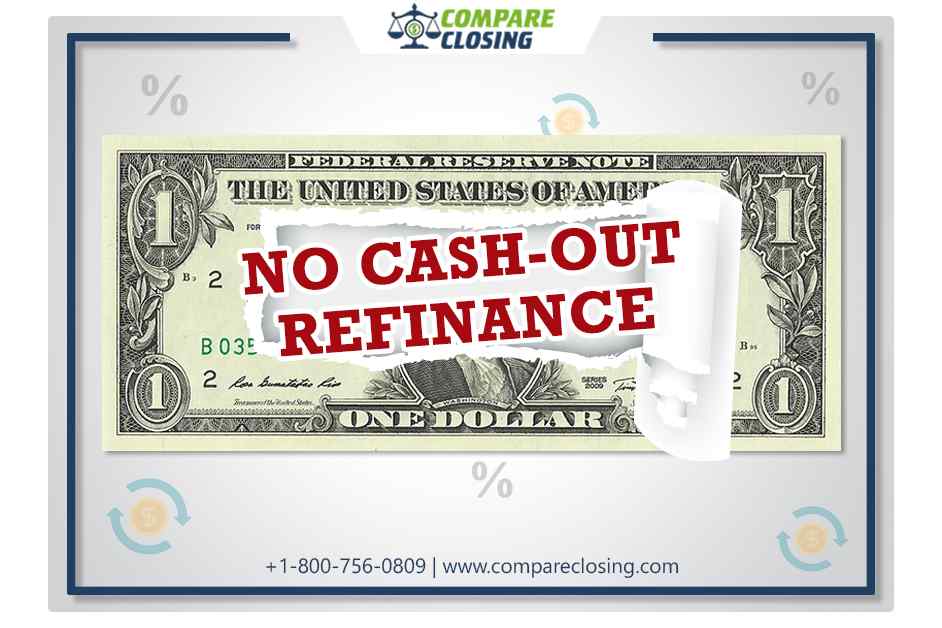Table of Contents
- What Are Netting Escrows & How Does It Work?: The Best Guide - January 2, 2024
- The Secret About Prescriptive Easement: Top Guide 1 Must Know - December 4, 2023
- About Home Equity Loans In Texas And How Can One Obtain It - November 27, 2023
Introduction to a No Cash Out Refinance
The refinancing of an existing mortgage for an amount equal to or less than the existing outstanding loan balance along with any additional loan settlement costs is referred to as no cash out refinance.
The primary reason for a no cash-out refinance is to lower the interest rate charged on the loan and/or if the borrower wants to change some of the terms in their mortgage.
A no cash-out refinance is a type of rate and term refinance, and can quite often be confused with a cash-out refinance.
Knowing more about a No Cash-Out Refinance
Borrowers who are seeking to make favorable adjustments to a loan’s terms have the option of refinancing a loan.
Because refinancing provides a variety of loans along with the advantages that can be found in many different situations they are common for mortgage loans.
The loan refinancing may be divided into two groups – the cash-out refinance and no cash out refinance. The borrower adds loan amount to their principal balance in cash-out refinancing.
Whereas the borrower refinances only the principal balance or possibly less in a no cash-out refinancing.
A no cash-out refinanced loan is a regular type of loan that is used in deals of standard mortgage refinancing.
The focus of a no cash out refinance is to improve the interest rate that is charged to the borrower’s loan for the purpose of easy cost savings.
To serve the borrower better, the Freddie Mac no cash-out refinance may reduce or increase the duration of the loan.
Difference between a Cash-out and no cash-out refinance loans
Cash-out and no cash-out loans both use the home as collateral. The main difference between cash-out and no cash-out is the paid-down balance along with the home’s equity and the present-day loan-to-value.
A borrower may look to a cash-out loan refinancing because they have paid down a large portion of their mortgage and now have equity available.
A cash-out refinancing loan does not increase the principal payoff or provide any additional funds.
No matter what the market environment is refinancing can occur in any type of market. But mostly when the interest rates are falling they become more popular.
In situations when the interest rate is falling it is the right time to capitalize on lower rates of interest offered by lenders. Borrowers may choose to refinance their loans at a lower rate when the rates are down.
As a wide range of mortgage loans are available so apart from the falling rates the mortgage lending market could also offer other reasons for refinancing.
Borrowers have the option to choose from a large assortment of mortgage loan variations, like:
- Fixed-rate mortgages
- Variable-rate mortgages
- Adjustable-rate mortgages
- Jumbo mortgages
- Government-insured mortgages
- Interest-only mortgages
Borrowers also like to refinance when they want o move from one fixed rate to a lower fixed rate. Borrowers having variable-rate or adjustable-rate loans would want to refinance and control their interest rate costs from going any higher when rates are rising.
When refinancing a mortgage loan the borrowers need to be cautious and pay attention to minute details.
They have many options for refinancing, so it is important that the borrower negotiate the best terms possible in their new loan terms as it will last through the loan’s remaining duration.
In a no-cash-out loan when borrowers opt for a longer-term maturity they may not realize that even with refinancing at a lower rate over time they will pay more interest.
One needs to be aware that fees will also be a factor for any type of mortgage loan refinancing.
Most refinancing transactions demand additional direct costs that are rolled into the balance of the new mortgage by most borrowers.
Conclusion
If a borrower chooses a no cash-out to refinance loan against their existing loan so to replace the principal value by either the same or less amount. A no cash out refinance does not allocate any money to the borrower for spending cash.
A no cash-out refinance is a rate and term refinance where the focus is mainly on adjusting a borrower’s interest and terms without advancing new money.
A cash-out refinance, advances new money to the borrower and a no cash-out refinance is just the opposite of it.
Amanda Byford
Amanda Byford has bought and sold many houses in the past fifteen years and is actively managing an income property portfolio consisting of multi-family properties. During the buying and selling of these properties, she has gone through several different mortgage loan transactions. This experience and knowledge have helped her develop an avenue to guide consumers to their best available option by comparing lenders through the Compare Closing business.





